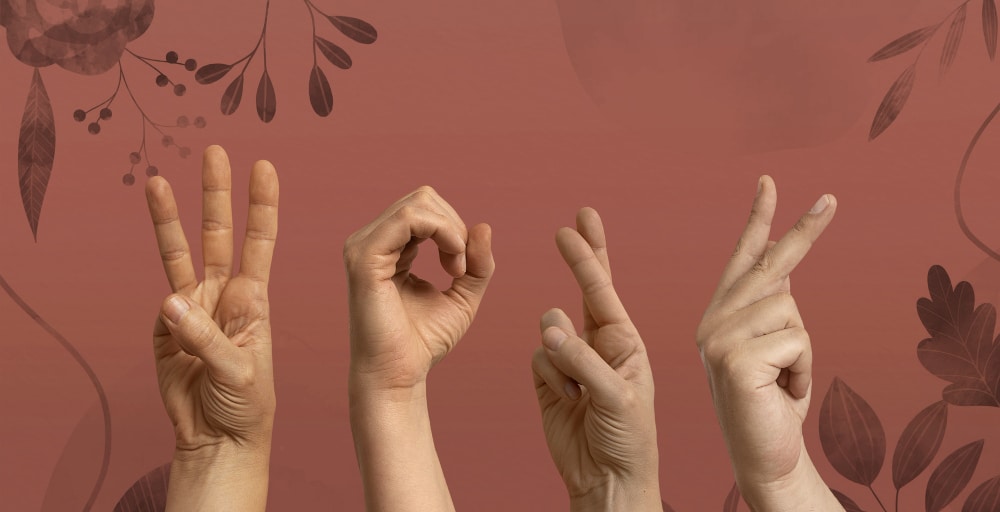Analysis
Diplomacy and resistance: how Dune shows us the power of language – including sign language
In Dune’s sandswept colonialist dystopia of the distant future, power is a force best handled – and transferred – surreptitiously. In a world of ultra-wealthy spice barons and interplanetary warfare, the greatest asset in both diplomacy and resistance is an intangible one: language. Nowhere is this clearer than in the films’ portrayal of sign language.
The Bene Gesserit is an all-woman dynasty leading an empire from behind the scenes. Their arsenal of powers include the mastery of dozens of languages. With these, they conduct diplomacy in public for the benefit of the men they pretend to serve. Meanwhile, they enact their true plans in secret, through whispers, telepathy and the native languages of their conspirators.
Paul Atreides (Timothée Chalamet) is a reluctant messiah, whose prophetic ascendancy is spurred on when there are attempts to have his family exterminated. Believed dead, Paul retreats to the desert with his Bene Gesserit mother, Lady Jessica (Rebecca Ferguson). There they find the Fremen, the free Indigenous peoples of the dune planet Arrakis. Paul and Jessica’s knowledge of the Fremen language is crucial to their acceptance by the community. Paul’s initiation into their ranks is also linguistic: the choosing of a Fremen name.
But Jessica and Paul’s use of the Bene Gesserits’ sign language is the most literal and urgent use of language as they survive threats in both Dune: Part One (2021) and the new Dune: Part Two (2024).
The complexity of sign
In the first film, the mother and son are abducted and transported across Arrakis in a helicopter. Feigning resignation, they use sign to plot their escape, unnoticed by the guards who don’t know this language. In part two, as enemies land just over the dune concealing Paul and his mother, they sign to plan an escape route in silence. Later in the film, a Bene Gesserit advisor signs to subtly annotate a verbal exchange with an untrustworthy group.
When Dune’s characters sign, it is with their hands by their sides, usually without eye contact, and often in brief sentences or even single signs.
This is very different to how sign languages are used in signing communities. In everyday communication, signers use a “sign space”, an approximate rectangle of space in front of the head and torso, and out to the distance of about the elbows. Eye contact is essential, as are facial expressions and body angle, which not only convey emotion but syntactical markers.
All of these components are part of a complete grammar that make sign languages as complex, emotive and capable of abstraction as any verbal language.
The signs used in Dune are closer to military or maritime hand gestures, used in situations that require communication without sound or across distance. These generally convey basic messages rather than grammatically complete sentences, with little emotional or contextual detail.
Deaf gain on screen
Although not a true sign language, the use of sign in Dune can still teach us a lesson about the value of sign language.
“Deaf Gain” is an academic principle that considers deaf experience in generative and positive terms: it emphasises what is gained through deafness and sign access, rather than what is lost through hearing loss.
Examples of deaf gain include language skills and cultural belonging, as well as physical skills such as enhanced vision or perception of vibrations. This is not to mention the benefit of being able to switch off a hearing aid or take off a cochlear implant in the presence of distracting or painful sounds.
Deaf gain is becoming increasingly present on contemporary screens.
In the horror franchise A Quiet Place, in which the world is overrun by blind, super-hearing murderous aliens, the family of a Deaf girl use American Sign Language to communicate, and even to thrive, without attracting the monsters’ attention.
In Avatar: The Way of Water, the characters use the Na’vi sign language (invented for the film by Deaf actor CJ Jones) to communicate under water, considering those who cannot sign to be underdeveloped.
But this is not just a contemporary concept. As far back as 1959, in the Marilyn Monroe comedy Some Like It Hot a mob boss switches his hearing aid off just before he gives the order to gun down a group in an enclosed space.
While not deaf themselves, Dune’s characters show us deaf gain through deft manipulation of their environment, from the stealth of their signs to their attunement to the vibrations they make in the sand, which they use to attract or repel the giant beasts below.
These films show us how we can be in our bodies differently; how to navigate the world in different physical, linguistic and sensory ways.
The power of language
The director of Dune, Denis Villeneuve, has a history of making films that understand the subtle power of linguistic control.
Blade Runner 2049 (2017) depicts another multilingual society in a similarly gold-hued, environmentally destroyed dust bowl, in which knowledge of different languages provides access to closed spaces and protection from surveillance.
In his sci-fi drama Arrival (2016), extraterrestrial vessels visit Earth to global awe and creeping panic. Military and political forces cannot determine the aliens’ purpose, and interplanetary war inches closer. It is only a linguist who is able to decipher the aliens’ goal: to gift Earthlings their remarkable language. This language is an inky, visual code – much closer to a sign language than a verbal one – which rewires the brains of those who master it, so they can see through time.
In the Dune films, as in Arrival, language is not only a means through which we can come to know something. It is something which can transform the limits and nature of knowledge itself. As Paul and Jessica understand, sign language can be both a hiding place and a tool – for survival, and for empowerment.
Correction: the role played by Rebecca Ferguson was originally incorrect. She plays Lady Jessica.
Gemma King, Senior Lecturer in French Studies, ARC DECRA Fellow in Screen Studies, Australian National University
This article is republished from The Conversation under a Creative Commons license. Read the original article.














